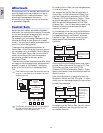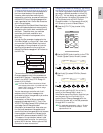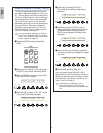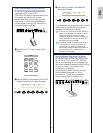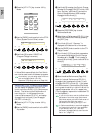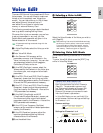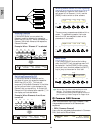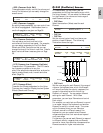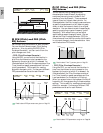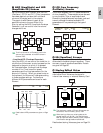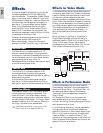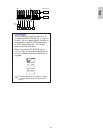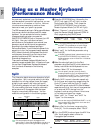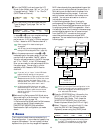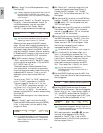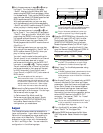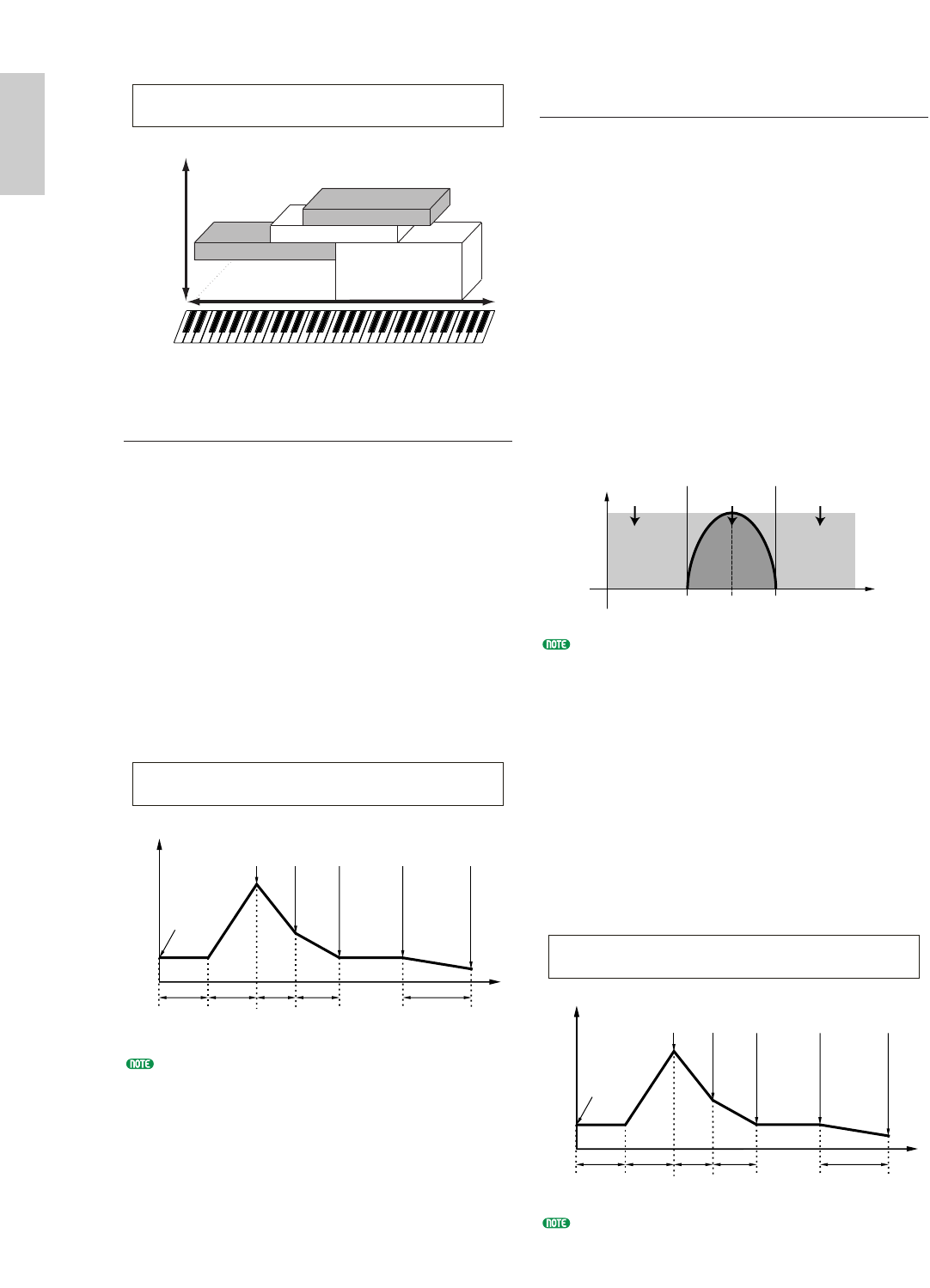
48
Basics
Section
5 PCH (Pitch) and PEG (Pitch
EG) Screens
Set the basic pitch parameters for each Element.
You can detune Elements, apply Pitch Scaling
and so on. Also, by setting the PEG (Pitch
Envelope Generator), you can control how the
pitch changes over time.
• PEG (Pitch Envelope Generator)
Using the PEG, you can control the transition in
pitch from the moment a note is pressed on the
keyboard to the point at which it is released. As
illustrated below, the Pitch Envelope consists of five
Time (transition speed) parameters and five Level
(pitch) parameters. This is useful for creating
automatic changes in pitch. Furthermore, different
PEG parameters can be set for each Element.
Details about PEG parameters are given on Page 76.
0
Release
Level
Attack
Level
Hold Level
Attack
Time
Hold
Time
Decay1
Time
Decay2
Time
Release
Time
Decay1
Level
Sustain
Level Key off
Time
Pitch
PEGíTime) Hold Attack Decay1 Decay2
EL1234 127 127 127 127
C-2
G8
Element 1
Velocity
Element 4
Element 2
Element 3
OSCíLimit) Note Limit Vel Limit
EL1234 C-2 - G 8 1 - 127
6 FLT (Filter) and FEG (Filter
EG) Screens
You can use the filter to change the tonal
characteristics of each Element, by adjusting
overtones (harmonic tones) included in the
waveform from the Element. There are several
types of filters, but its basic idea is similar. As
illustrated below, the filter is used to pass overtones
at specific frequencies and cut off (does not pass)
others, to alter the harmonic factor of an original
waveform. You can determine such frequencies by
specifying a pointing or center frequency (cutoff
frequency). With some filters, you can adjust
signal levels at several frequency bands. You can
also set the Filter Envelope Generator (FEG) for
time variance of how the filter works, which results
in a dynamic change in tonal characteristics. Here
we introduce how FEG works.
Details about Filter Types are given on Page 78.
• FEG (Filter Envelope Generator)
Using the FEG, you can control the transition in
tone from the moment a note is pressed on the
keyboard to the point at which it is released. As
illustrated below, the Filter Envelope consists of
five Time (transition speed) parameters and five
Level parameters (for the amount of filtering).
When you press a note on the keyboard, the cutoff
frequency will change according to these envelope
settings. This is useful for creating automatic wah
effects, for example. Furthermore, different FEG
parameters can be set for each Element.
Details about FEG parameters are given on Page 80.
0
Release
Level
Attack
Level
Hold Level
Attack
Time
Hold
Time
Decay1
Time
Decay2
Time
Release
Time
Decay1
Level
Sustain
Level Key off
Time
Level
FEGíTime) Hold Attack Decay1 Decay2
EL1234 127 127 127 127
Range passed
Time
Level
Cutoff range Cutoff range
Center frequency



